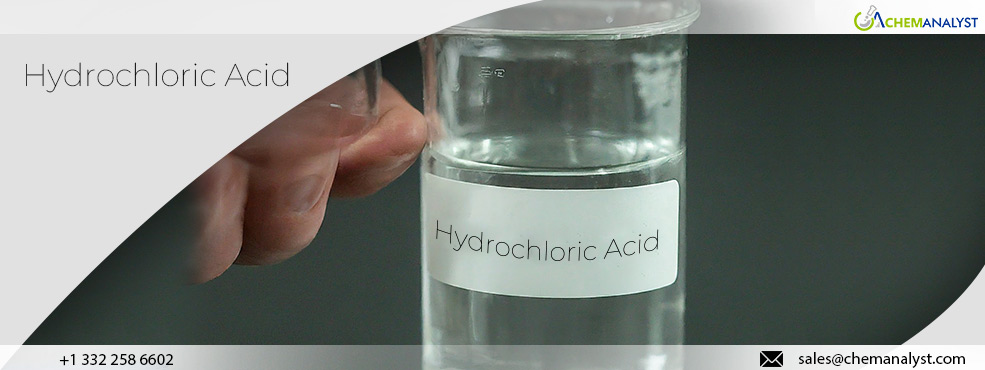European HCl Market Sees Early Week Decline Amidst Reduced Downstream Consumption
- 07-May-2024 5:15 PM
- Journalist: Jai Sen
In the early weeks of May 2024, the European market witnessed a decline in the prices of Hydrochloric Acid (HCl). This downtrend is attributed to reduced utilization from downstream industries. In Germany, for instance, HCl prices dipped by approximately 0.8% at the onset of the month, against a 3% surge in the prices of caustic soda. Similarly, the steel rebar prices, a key HCl downstream product, saw a decline of about 0.6% on a week-on-week basis.
Notably, the preceding month had witnessed a contrasting scenario, with HCl prices in the German market escalated by a noteworthy 10%. This surge was mirrored by a 14% rise in upstream caustic soda prices, propelled by heightened raw material and logistics costs. However, the current downward trajectory in the HCl market is primarily shaped by downstream market forces.
The European market for HCl has encountered disruptions from the demand side in recent months. Belgian steelmakers, for instance, curtailed steel production by 5.7% in March 2024 compared to the previous year, contributing to an overall decrease in steel production across EU countries. This trend has persisted, with Belgian steel production witnessing a significant 16.1% reduction in 2023 compared to 2022.
Furthermore, according to Eurochlor, a prominent player in the European Chlor Alkali products including HCl, released in early May 2024, there was a decline in the daily production of Chlorine in March compared to preceding months, alongside reduced stock levels of Caustic soda. In March, European chlorine production amounted to 690,555 tonnes. The average daily production in March 2024, at 22,276 tonnes, decreased by 8.4% compared to the previous month (February 2024: 24,331 tonnes), yet marked a 13.6% increase from March 2023 (19,605 tonnes). Caustic soda stocks in March 2024 totaled 242,796 tonnes, reflecting a 5.5% decrease from the prior month (February 2024: 256,939 tonnes) and a shortfall of 67,953 tonnes compared to March 2023 (310,749 tonnes).
Adding to the narrative, ArcelorMittal's quarterly report provides a thorough overview of the wider economic panorama. Sales figures for Q1 2024 reflect a marginal decrease compared to the previous year, reflecting the broader economic challenges. Steel shipments, a key indicator of industrial activity, also witnessed a decline in the first quarter of 2024, underscoring the multifaceted impact of economic fluctuations on downstream industries.
The European market for HCl showcases the intricate nature of industrial supply chains, where shifts in demand, production complexities, and economic changes converge to shape market dynamics. Furthermore, HCl prices saw a decline across Europe, particularly notable in France, Italy, and the UK, where each recorded a decrease exceeding 1.2%.
In conclusion, the European market for HCl witnessed a decline in the initial week, although further price fluctuations may occur due to influences from both downstream and upstream factors.



